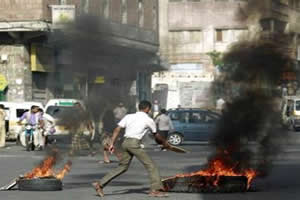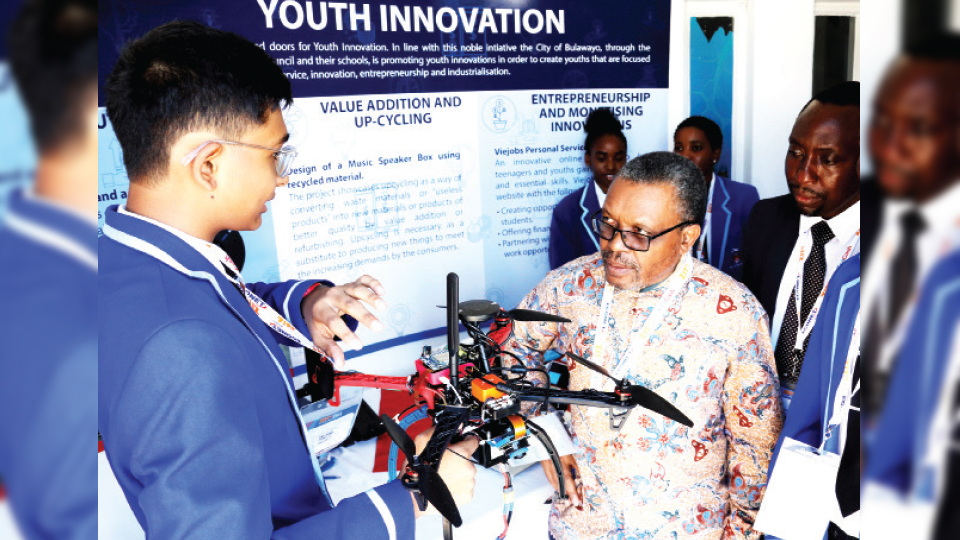Construction of museum complete at Chimoio shrine
for exhibitions and briefs on the execution of the liberation war from Mozambique.
The museum is a reconstruction of a building used in the struggle as the Zanu-PF Headquarters during the liberation struggle. On display in the museum are guns, cooking drums and gongs that were used by freedom fighters.
Addressing 240 senior police officers and recruits during a recent visit of the shrine, Zimbabwe National Museum and Monuments central region director Mr Lovemore Mandima said the idea of the museum would be to tell the liberation war story.
“It is meant to capture all operations in Mozambique, which occurred during the liberation struggle.
“It will cover all sites like Tembwe, Nyadzonia, Chimoio, Doroi, Chibabawa, Nhangau and other sites in Gaza province which include Barrage, Mapai and Maduvo,” he said.
Mr Mandima said they had purposely avoided reconstructing demarcations in the museum for the ‘bombarded souls’ to remain the same.
“Within the museum, shall be a variety of artifacts which include some of the guns which were used and any other materials such as cooking drums, gongs, photographs, maps and any other related objects which will assist in telling the story,” he said.
He said reconstruction of the museum started in 2006 and authorities were busy working on the storyline in the exhibition.
Information on Mozambique’s role in the struggle as a host country would also be included in the museum.
Meanwhile, the ZRP donated US$200 (6 000 metical) to officials at Josiah Tongogara Secondary School to buy paint and other material to renovate the school.
Morris Depot Commandant Senior Assistant Commissioner Grace Ndebele who was head of the delegation handed over the donation.
The Mozambican government named the school in recognition of the late national hero Cde Josiah Tongogara.
Chimoio Liberation Site, in the Manica Province, was the Zanu-PF headquarters during the liberation war and had various camps within.
These camps included: Parirenyatwa camp clinic, Chindunduma school complex, Zvidozvevanhu, a garage (transport section), Mbuya Nehanda – for female residents, Chitepo for intensive political orientation, Percy Ntini rehabilitation centre for those wounded on the war front and Chaminuka – for security.
Others were Takawira I for male residents, Takawira II – for training, Mudzingadzi – for agriculture/production.
Chimoio Camp is situated about 21 kilometres north of the town. The camp was said to have housed between 9 000 and 11 000 people during the attack on November 23 1977.
Information from Selous Scouts and captured guerillas and subsequent surveillance carried out led to the Rhodesians knowing about the camp.
On November 23 1977, Chimoio Camp was attacked at around 0800 hours when most inmates were on parade.
The attacking force was made up of; 8 Hawker Hunters, 6 Vampire ground attack aircraft, 3 Canberra bombers, 6 Dakota troop carrying aircraft, 185 ground troops parachuted and heli-landed. There were also an unknown number of helicopters.
Casualties at Chimoio were mainly at Parirenyatwa, the camp clinic where the sick and wounded were about to be transported to the main hospital in Chimoio Town.
School children were mostly killed on a riverline where they had taken cover while the transport section was totally decimated, and paratroopers in stop groups around the perimeter of the camp killed those that were fleeing.
Chimoio had a limited number of trained personnel and the majority of casualties were the untrained women and children as well as the wounded.
Out of about plus or minus 10 000 people who were within the camp on the morning of the raid, those estimated to have died are plus or minus 5 000. They were buried in 20 mass graves.










Comments